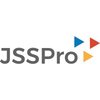
i
Daily Equity Financial Services
Filter interviews by
Daily Equity Financial Services Financial Analyst Interview Questions and Answers
Daily Equity Financial Services Financial Analyst Interview Experiences
1 interview found
I applied via LinkedIn and was interviewed before Nov 2023. There were 3 interview rounds.
Be thorough with basics on equity markets, valuation and technical analysis. Questions are basic, but require fundamental knowledge.
Basically, you'll be quizzed on analysis using a Nifty50 stock.
(2 Questions)
- Q1. Behavioral Questions, Problem Solving Test, Agility in time management
- Q2. Stress test, Working under pressure test and lastly, compensation discussion.
Interview Preparation Tips
- Financial Analysis
- Financial Accounting
- Equity Research
- Equity Valuation
Top trending discussions






Interview questions from similar companies

Financial Analyst Interview Questions & Answers
Nomura Structured Finance Servicesposted on 3 Jul 2024
(2 Questions)
- Q1. What do you know about derivatives
- Ans.
Derivatives are financial instruments whose value is derived from an underlying asset or group of assets.
Derivatives can be used for hedging, speculation, or arbitrage.
Common types of derivatives include options, futures, forwards, and swaps.
Derivatives allow investors to take on leverage and potentially amplify returns.
Derivatives are traded on exchanges or over-the-counter (OTC) markets.
Example: A call option on a st...
- Q2. Explain beta in your words?
- Ans.
Beta is a measure of a stock's volatility in relation to the overall market.
Beta indicates how much a stock's price moves in relation to the market as a whole.
A beta of 1 means the stock moves in line with the market, while a beta greater than 1 is more volatile and less than 1 is less volatile.
Beta helps investors assess the risk of a stock compared to the market.
For example, a stock with a beta of 1.5 is expected to ...
Interview Preparation Tips

I applied via Recruitment Consulltant and was interviewed before Sep 2022. There was 1 interview round.
(5 Questions)
- Q1. What is EBITDA What is PAT
- Ans.
EBITDA stands for Earnings Before Interest, Taxes, Depreciation, and Amortization. PAT stands for Profit After Tax.
EBITDA is a measure of a company's operating performance without factoring in financing costs or taxes.
PAT is the net profit of a company after deducting all expenses including taxes.
EBITDA = Revenue - Expenses (excluding interest, taxes, depreciation, and amortization)
PAT = Net Income - Taxes
- Q2. Why whated to do work in finance
- Q3. Tell me something about yourself
- Q4. Where you wanted to see in5 yrs
- Q5. There is any plan for higher studies
Interview Preparation Tips

Interview Preparation Tips
Experience: They were looking for a fit. I mentioned that my brother is in IFCI, probably that was fit for me.
General Tips: Apart from that, one should prepare finance projects on CV thoroughly for finance interviews. You can write the details of what all you did, why you did, what were assumptions, what was approach, what were results, how can it be improved, what were learning etc. on a copy so that it is readily available for later reference during process.
Skills: Banking, Economics
College Name: NA

Financial Analyst Interview Questions & Answers
Nomura Structured Finance Servicesposted on 26 Feb 2024
(1 Question)
- Q1. Banking Products, Swaps, Derivatives etc

I applied via Recruitment Consulltant and was interviewed before Sep 2022. There were 2 interview rounds.

(2 Questions)
- Q1. Tell me about yourself why finance
- Q2. What is EBITDA What is PAT
- Ans.
EBITDA stands for Earnings Before Interest, Taxes, Depreciation, and Amortization. PAT stands for Profit After Tax.
EBITDA is a measure of a company's operating performance without factoring in financing costs or taxes.
PAT is the net profit of a company after deducting all expenses including taxes.
EBITDA = Revenue - Expenses (excluding interest, taxes, depreciation, and amortization)
PAT = EBITDA - Interest - Taxes - Dep
Interview Preparation Tips

Interview Preparation Tips
Experience: They were looking for a fit. I mentioned that my brother is in IFCI, probably that was fit for me.
General Tips: Apart from that, one should prepare finance projects on CV thoroughly for finance interviews. You can write the details of what all you did, why you did, what were assumptions, what was approach, what were results, how can it be improved, what were learning etc. on a copy so that it is readily available for later reference during process.
Skills: Banking, Economics
College Name: NA

Financial Analyst Interview Questions & Answers
Nomura Structured Finance Servicesposted on 3 Jul 2024
(2 Questions)
- Q1. What do you know about derivatives
- Ans.
Derivatives are financial instruments whose value is derived from an underlying asset or group of assets.
Derivatives can be used for hedging, speculation, or arbitrage.
Common types of derivatives include options, futures, forwards, and swaps.
Derivatives allow investors to take on leverage and potentially amplify returns.
Derivatives are traded on exchanges or over-the-counter (OTC) markets.
Example: A call option on a st...
- Q2. Explain beta in your words?
- Ans.
Beta is a measure of a stock's volatility in relation to the overall market.
Beta indicates how much a stock's price moves in relation to the market as a whole.
A beta of 1 means the stock moves in line with the market, while a beta greater than 1 is more volatile and less than 1 is less volatile.
Beta helps investors assess the risk of a stock compared to the market.
For example, a stock with a beta of 1.5 is expected to ...
Interview Preparation Tips

I applied via Recruitment Consulltant and was interviewed before Sep 2022. There was 1 interview round.
(5 Questions)
- Q1. What is EBITDA What is PAT
- Ans.
EBITDA stands for Earnings Before Interest, Taxes, Depreciation, and Amortization. PAT stands for Profit After Tax.
EBITDA is a measure of a company's operating performance without factoring in financing costs or taxes.
PAT is the net profit of a company after deducting all expenses including taxes.
EBITDA = Revenue - Expenses (excluding interest, taxes, depreciation, and amortization)
PAT = Net Income - Taxes
- Q2. Why whated to do work in finance
- Q3. Tell me something about yourself
- Q4. Where you wanted to see in5 yrs
- Q5. There is any plan for higher studies
Interview Preparation Tips

Financial Analyst Interview Questions & Answers
Nomura Structured Finance Servicesposted on 26 Feb 2024
(1 Question)
- Q1. Banking Products, Swaps, Derivatives etc
Daily Equity Financial Services Interview FAQs
Tell us how to improve this page.
Interview Questions for Popular Designations
- Financial Associate Interview Questions
- Financial Accountant Interview Questions
- Senior Financial Analyst Interview Questions
- Financial Controller Interview Questions
- Financial Consultant Interview Questions
- Financial Planning Analyst Interview Questions
- Junior Financial Analyst Interview Questions
- Cheif Financial Officer Interview Questions
- Show more
Interview Questions from Similar Companies
Daily Equity Financial Services Financial Analyst Reviews and Ratings
based on 1 review
Rating in categories

Karvy Financial Services

Reliance Money

Sonata Finance

Link Group
- Home >
- Interviews >
- Daily Equity Financial Services Interview Questions >
- Daily Equity Financial Services Financial Analyst Interview Questions











